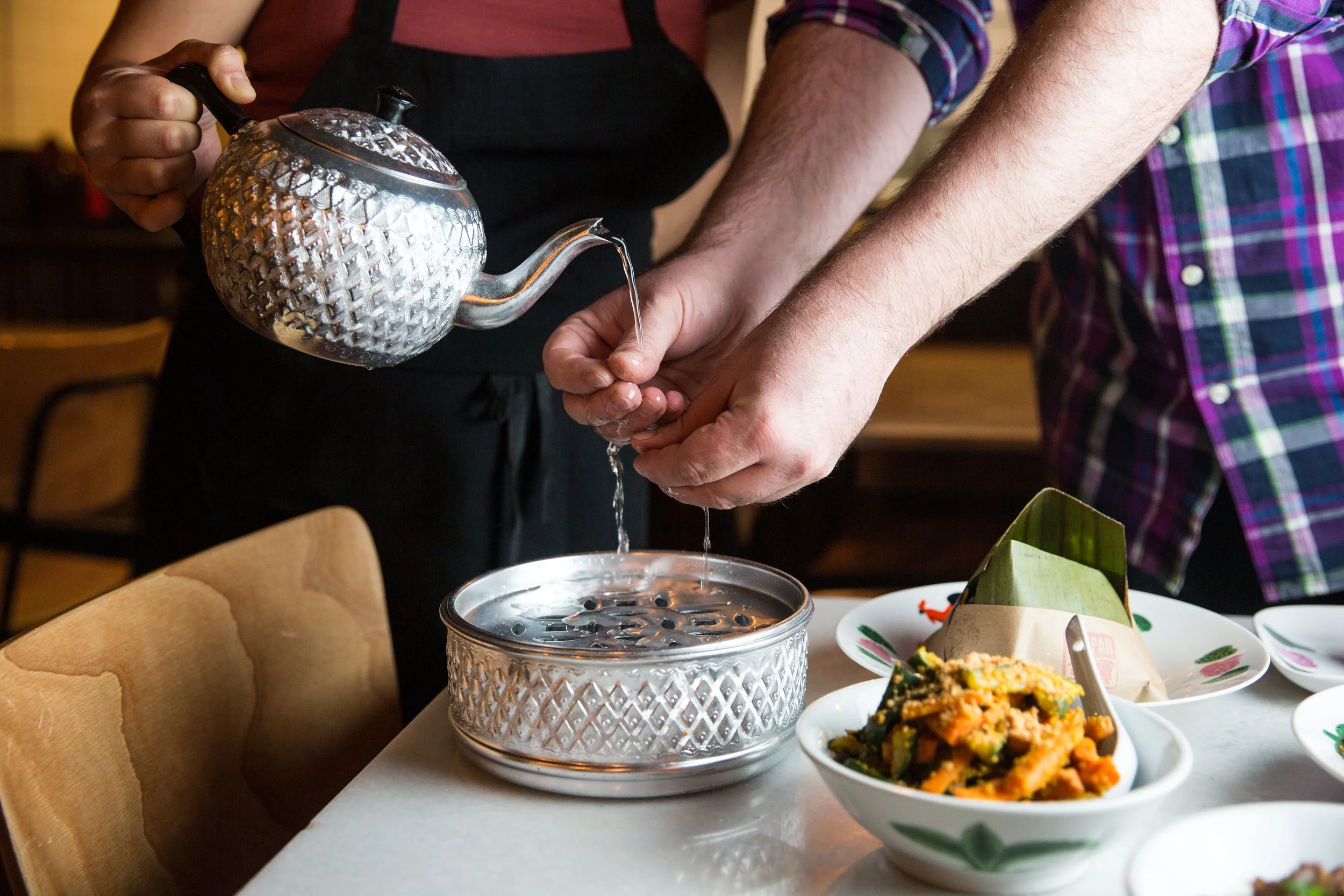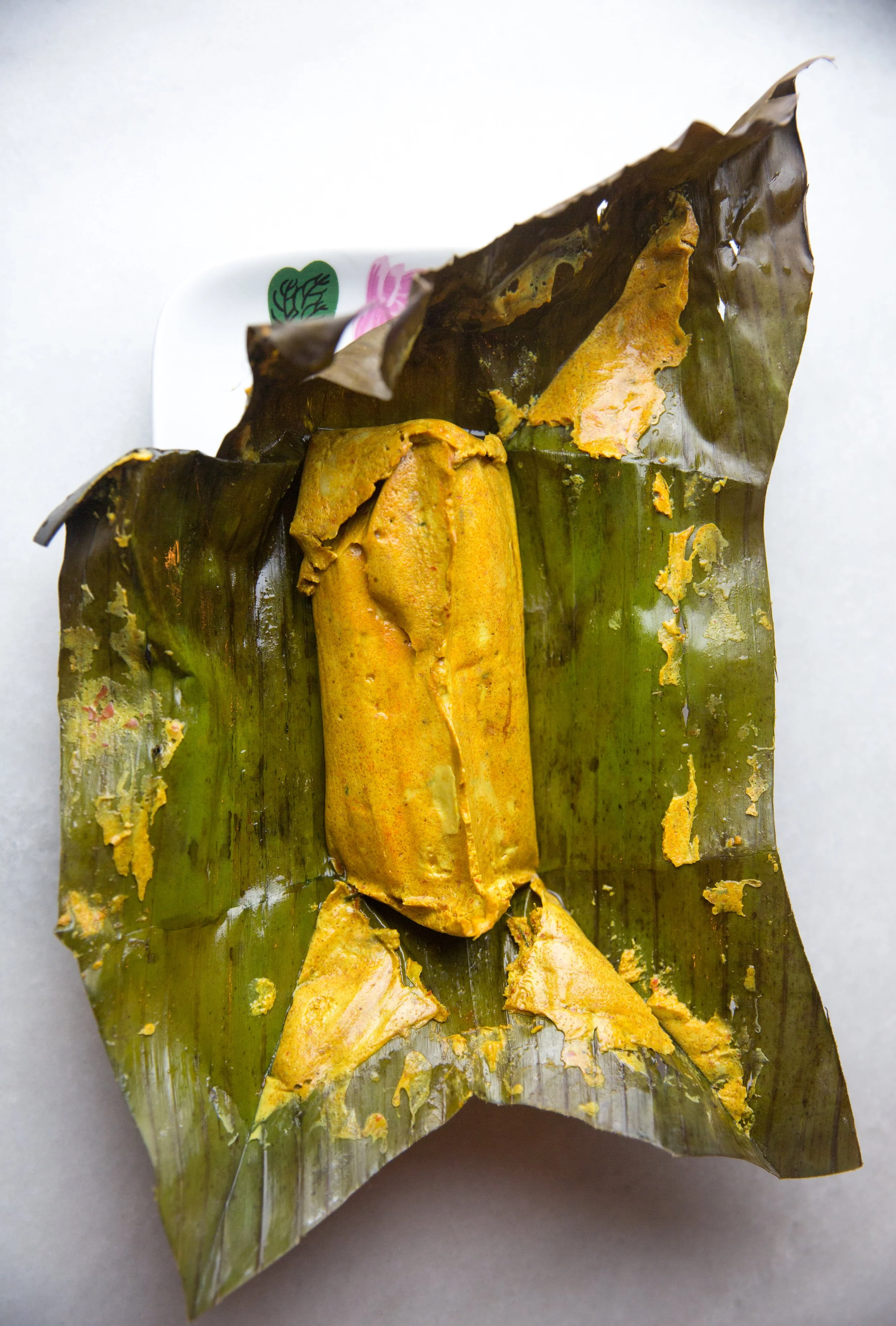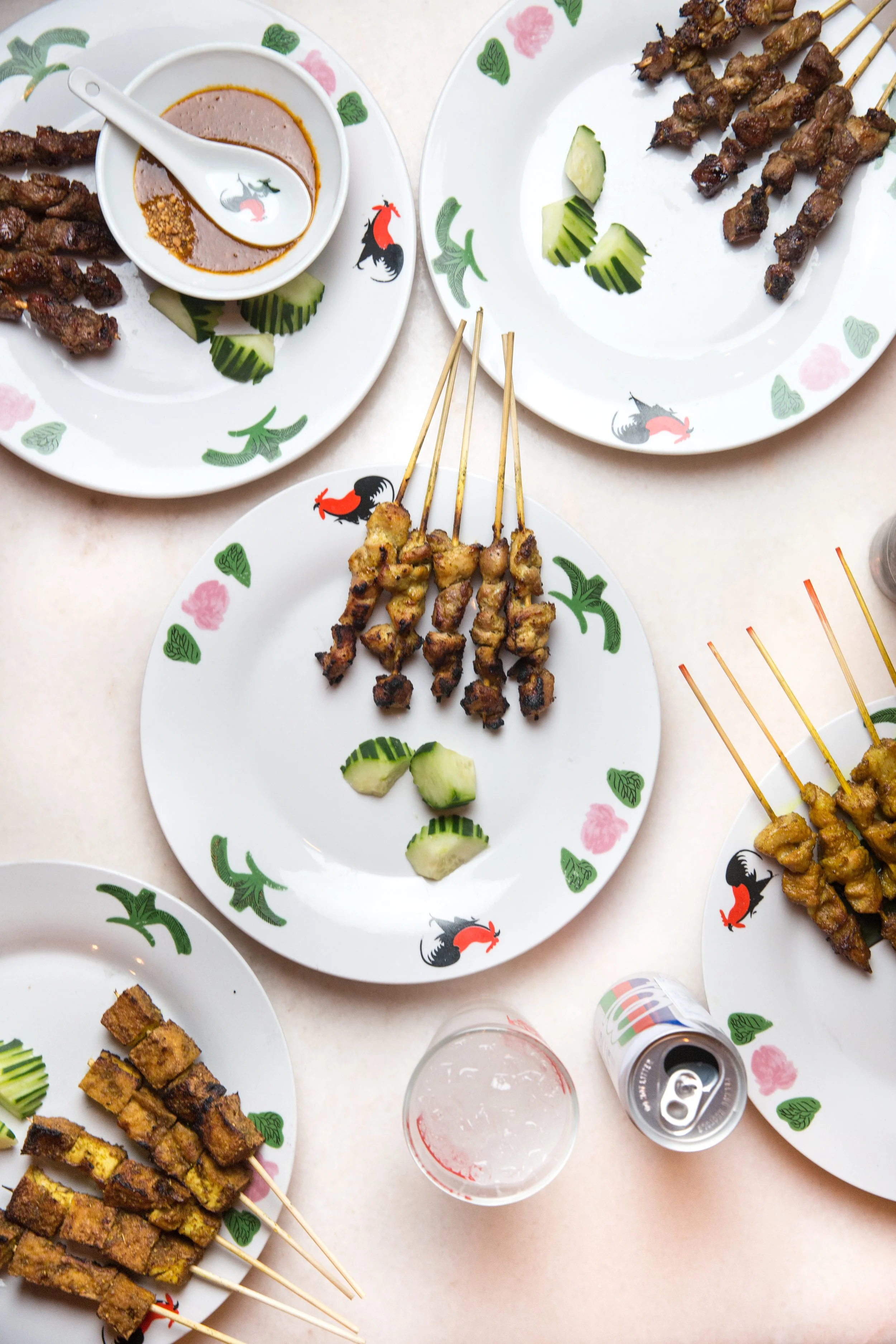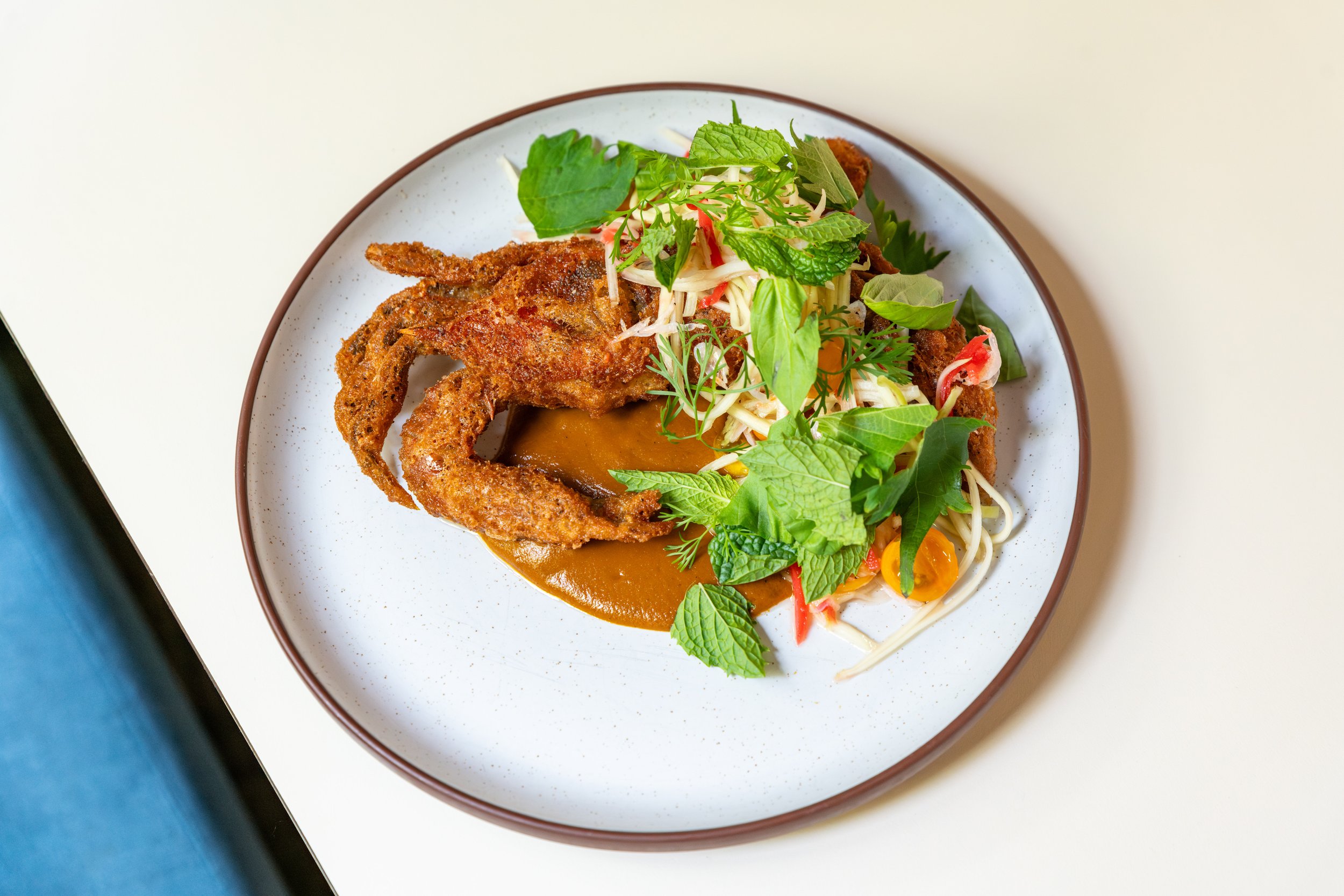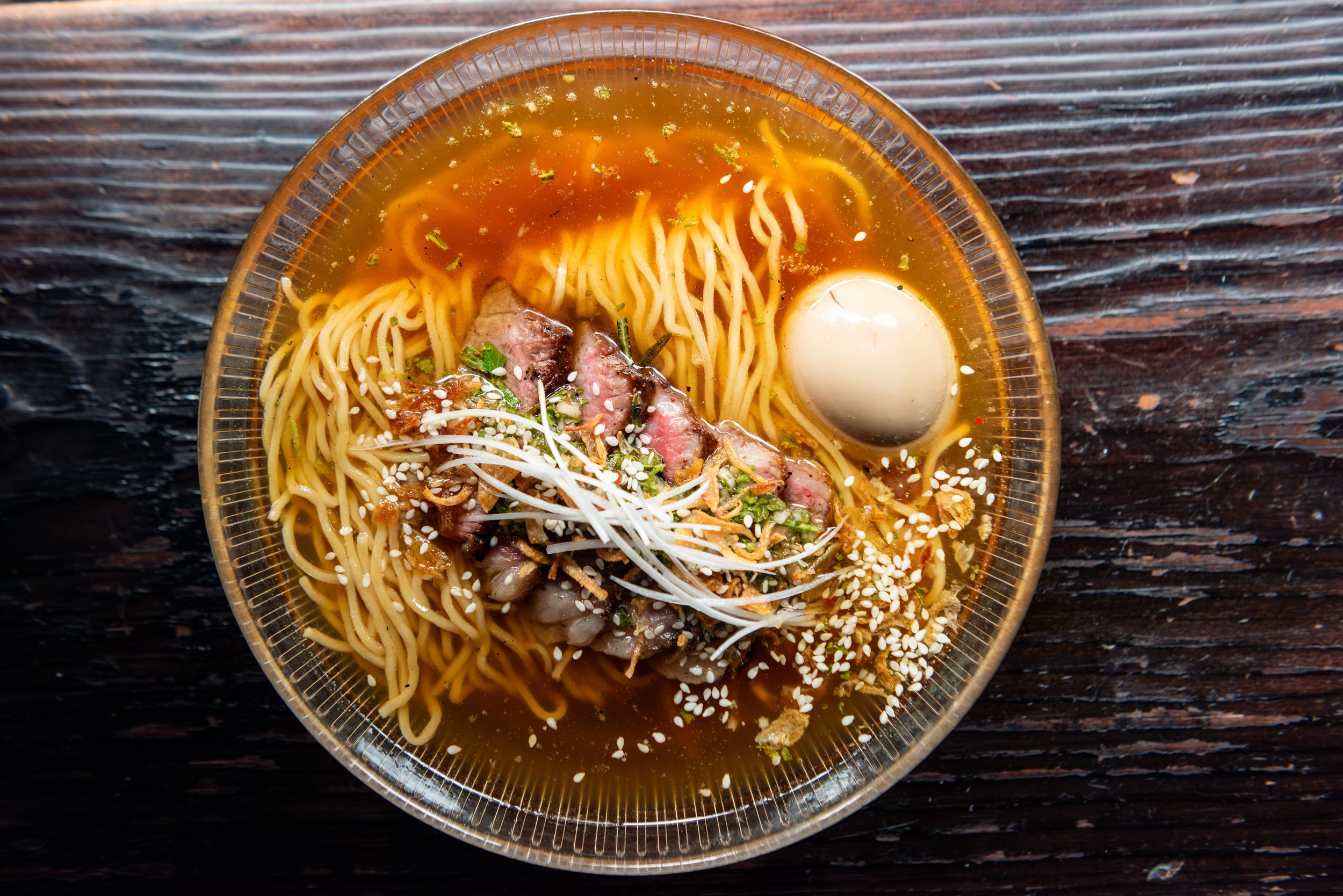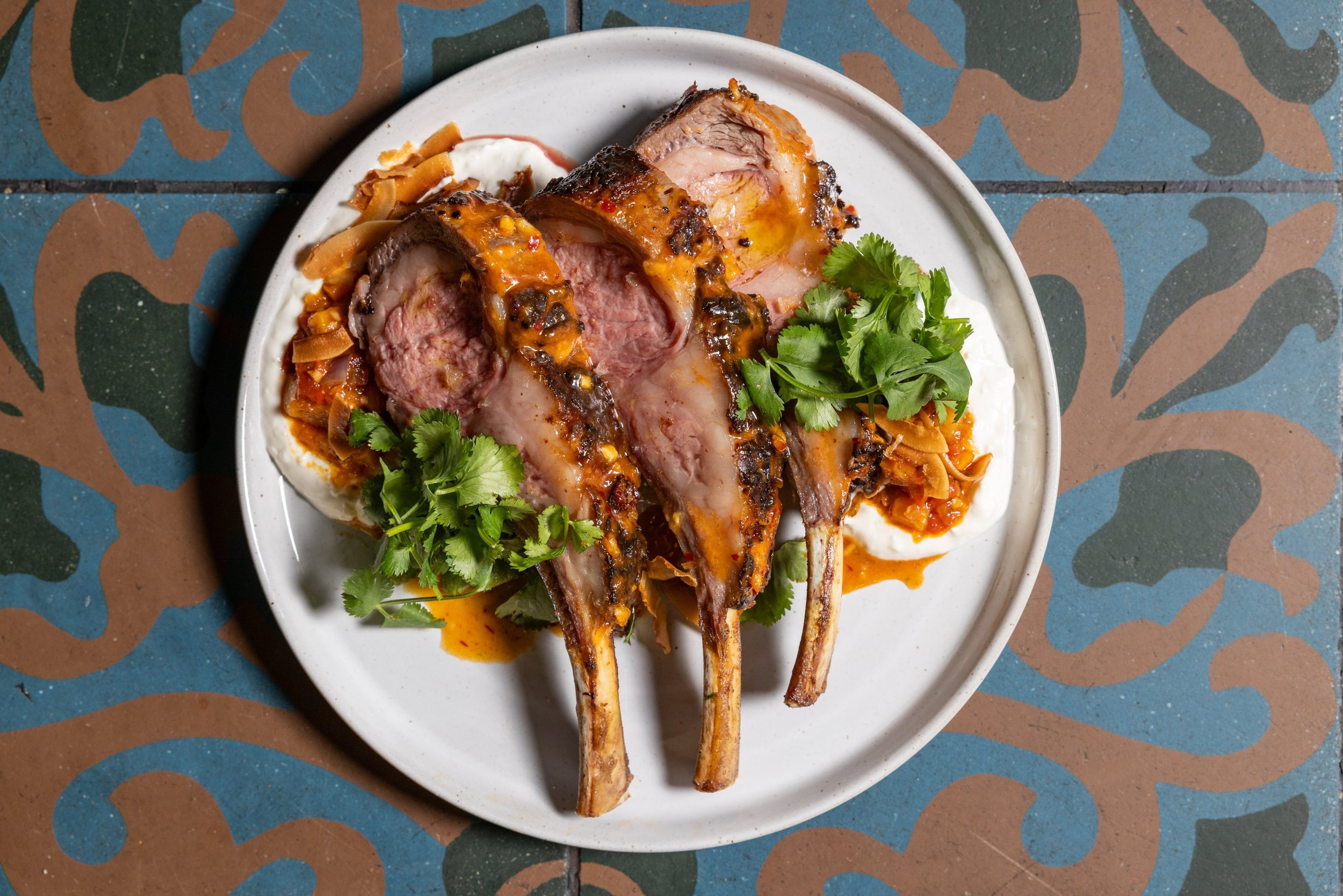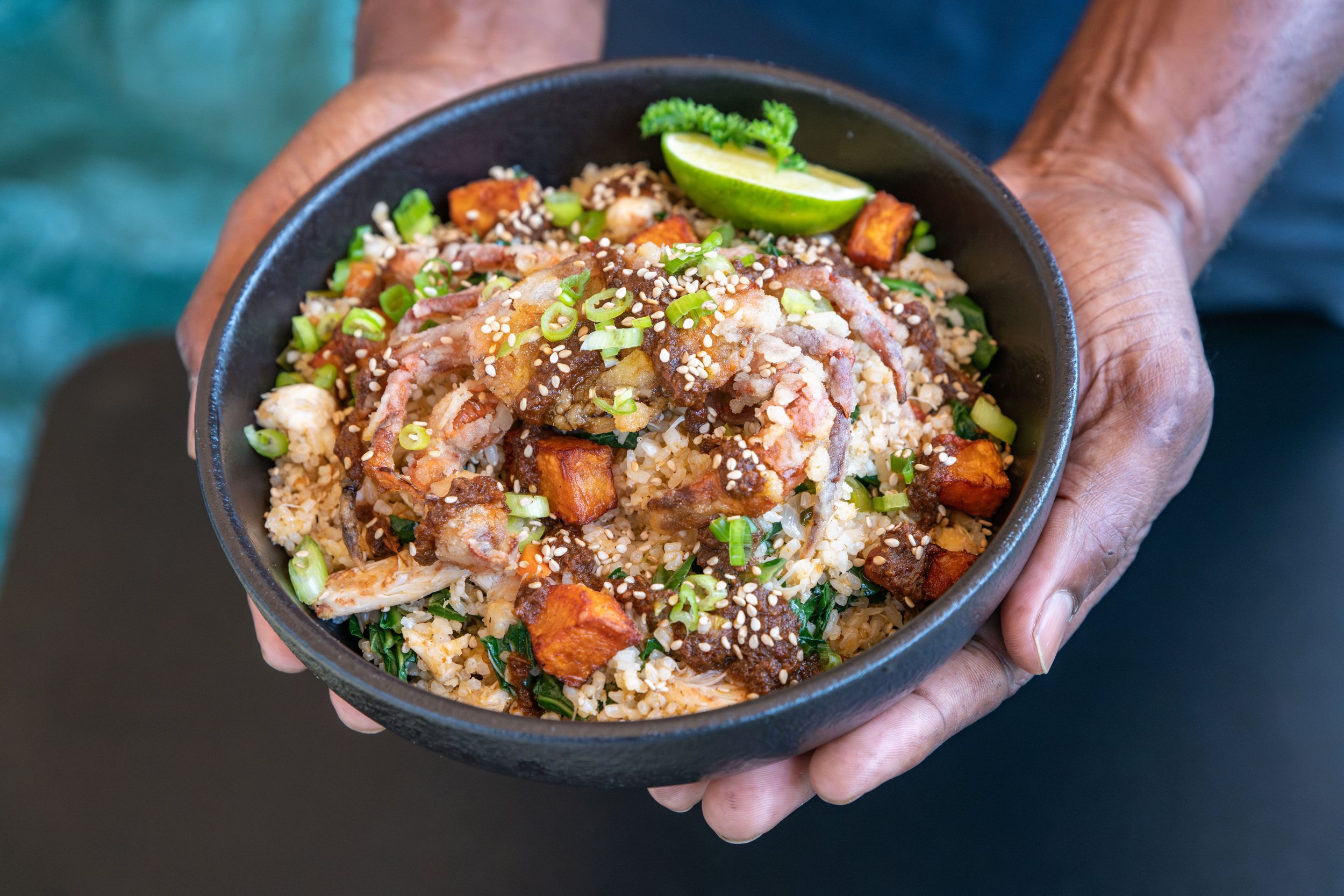The Scent of Saté
At Saté Kampar, Chef Angelina Branca has imported the spirit of Malaysia to Philadelphia.
Angelina Branca stands close. Close enough that your shoulders may touch as she pours water over your hands for a ceremonious cleansing. It’s how many meals begin at Saté Kampar, with water flowing from a gleaming, metal teapot over guests' hands held above an ornate well.
Ablution is an everyday ritual practiced by Muslims (and non-Muslims) across Malaysia. Branca is Malaysian-Philadelphian, and when she opened Saté Kampar in February 2016, she wanted everyone to feel comfortable and welcome. Such is the tradition and history of Malaysia, where people of different backgrounds have come together to live (and eat!) in peace and tolerance.
There’s even a word for it in Malaysian, muhibbah, which translates to “goodwill,” but for Branca and many Malay people, it has a more expansive connotation, characterizing celebrations shared by those of different races, religions, and cultures. As with many stops along old spice trade routes, Malaysia harmonized a culture with many influences: Spanish, Portuguese, Dutch, Chinese, and Arabian. Buddha’s birthday, Chinese New Year, Islamic New Year, and Christmas are all national holidays in Malaysia.
“The tolerance of other cultures in Malaysia is reflected in food, art, and language. All this collaboration between cultures is the beauty of its cuisine and cultural history. Today it’s taken for granted, almost forgotten, but when you look at Malaysian art and food, you see the cultures coming together,” says Branca, who has called Philly home since 2000. She grew up in Malaysia in the 1960s and 1970s and came to the United States to embark on what became an incredibly successful career in corporate America.
“I was asked to be senior partner at IBM, and that’s when I decided it was time to give it up. The work didn’t feed my soul. I needed something to connect to home, to bring my two worlds together. And I got to work on Saté Kampar with my husband, John, who’s from Philadelphia. It was a great opportunity to see how we could present Malaysian food, by someone who grew up here and someone who grew up on the other side of the planet. We never looked back.”
Since coming to America, Malaysian food was what Branca had missed most. At just 5 years old, she remembers peeling shallots, wet-eyed, for her grandmother. Matriarch and maven of the kitchen, her grandmother, along with her mother and all the ladies in her family, taught Branca how to cook, including how to make a bedrock fish sauce. Today, all the foundational sauces and condiments of Malaysian cuisine are widely available in jars, tubs, and bottles, but Branca avoids modern, commercialized products at Saté Kampar. It’s an ethos that also carries through to the design of her restaurant.
“We wanted to recreate the experience of the Malaysia that I grew up with. Saté Kampar looks like it’s set in the period of the 1960s and 70s in Malaysia. The marble tables are from Kampar, Malaysia. We even shipped in [the decorative] windows from old wooden houses on stilts. We imported the saté grills that we trained our staff on. We sourced the coconut charcoal from Malaysia, and also import coffee and tea.”
It wasn’t enough for Branca to bring the spirit of muhibbah to her guests. She also wanted to bring together the diverse community of chefs in Philadelphia. She began a dinner series called Muhibbah, a pop-up that started at Saté Kampar and moves around to different spots. It includes six or seven chefs who share the food from their heritage rather than their restaurant. Diana Widjojo, Davina Soondrum, Ari Miller, Nick Elmi, Kiki Aranita and Chris Vacca, and Tova du Plessis have all participated.
“Proceeds from the dinners go to nonprofits that work with immigrants and refugees, [like Hias Pennsylvania]. It’s our way to give back to the community because the restaurant industry is so diverse and amazing. I want to shine a light on all the diversity of cuisines, not just my own.” says Branca.
Branca recalls following the scent of saté on the streets of her hometown to particular styles of saté restaurants—say, the sweeter Kajang style or the Chinese-leaning Melaka. Cumin, coriander, fennel, turmeric, galangal, ginger, shallots: Philadelphians can now follow those scents to Saté Kampar, where Branca has planted her Malaysian soul in the heart of the City of Brotherly Love.


